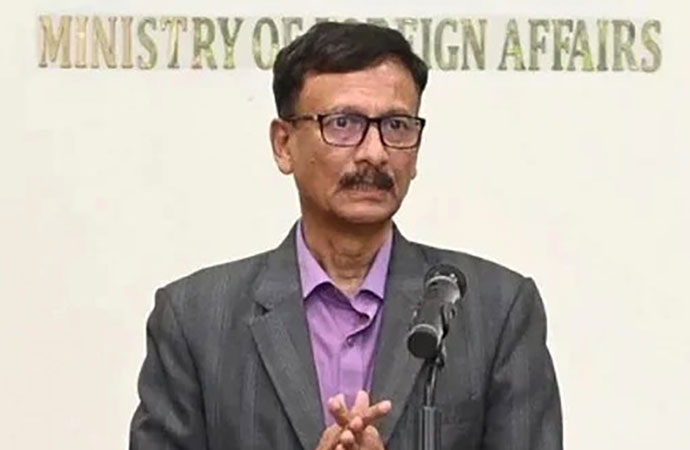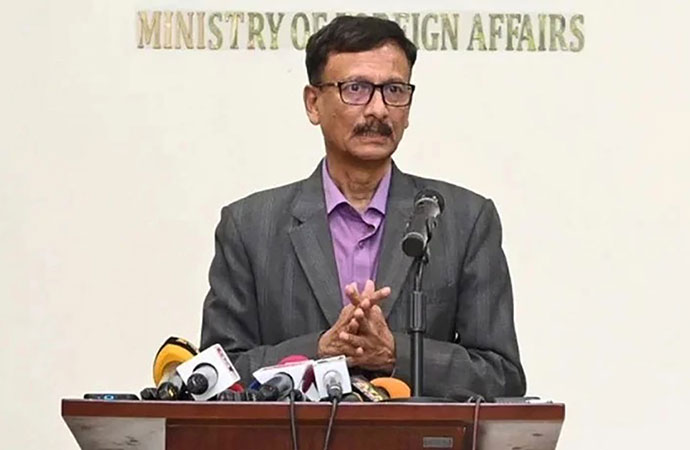Business

Can Lotus Kamal succeed where Muhith failed?
Surely we will see the coming budget will have its main focus on quality job creation given the present state of threatening joblessness. Then it will not only be responsive to much talked about SDGs implementation in the way of poverty reduction, but also our cherished growth will find answer to be meaningful being qualitative and reducing ever growing inequality. The latter has underpinned a deep concern to economists and social thinkers. A big amount budget must signify in ensuring a broader economic and social empowerment of the majority as its final goal.
As data shows, the challenge of addressing youth unemployment is becoming increasingly evident. Between 2015-16 and 2016-17, a total of 1,296 thousand jobs were created in Bangladesh, of which 420 thousand jobs went to the male workers and 876 thousand jobs to the female workers (BBS, 2018). Despite the increase in employment, the jobs created are not adequate to meet the market demand. Estimates suggest that 2.1 million people are expected to enter the country's labour force every year during the period 2013-2023 (World Bank, 2013). This implies that even if approximately 1.3 million jobs are created each year (BBS, 2018), about 800 thousand newly unemployed people will join the already significant amount of unemployed people in the country each year, provided all other factors are held constant.
BBS's Labour Force Survey (LFS) 2016-17 reveals that while the national unemployment rate was 4.2 percent within the cohort of the youth, the unemployment rate was as high as 10.6 percent. The trends from labour force surveys of the past point out that the youth unemployment rate has been on a steady rise, with unemployment rates being higher in the urban areas and among females.
The study tells the share of unemployed youth in total unemployment was 79.6 percent in 2016-17. More strikingly, unemployment rate among youth having a tertiary level education was 13.4 percent in 2016-17 (BBS, 2018). The LFS 2016-17 indicates that unemployment was highest among youths having secondary level education (28 percent). Ironically, a positive relationship was found between education and unemployment in Bangladesh (BBS,2018), implying that the higher the level of education, the greater the likelihood of being unemployed.
The positive link between higher education and unemployment could be explained by the nature of the nexus between education enrolment, education quality and employment. If education enrolment increases, but education quality does not, then the labour market will experience the influx of a large number of poorly educated youth. In 2016-17, an alarming percentage of youth (29.8 percent) were not in education, employment and training (NEET), according to BBS (2018). This suggests that education is not empowering the youth of the country with the right set of skills to be employable in the economy. Such high unemployment among the young population implies that we are not being able to benefit from the "demographic dividend."
There is another narrative of positive relationship between higher education and unemployment. If the marginal learning from each additional year of education is Zero, then employers will be indifferent between hiring less educated and more educated workers. However, since more educated workers tend to claim high wages than less educated workers, employers will likely prefer less educated workers for hiring, since they have the same level of skills, but will work for lesser wages. This means that if the quality of education cannot ensure a sufficiently high marginal level of learning with each additional year of education, then more educated workers will be less employable compared to less educated workers.
So number one, we are on a way of achieving an amazing growth but that has to be seen now with job creation in the coming budget and secondly with ensuring quality education that must be made inter connected straight to the nature of job that must guarantee decent as per our commitment to fulfil SDGs. So there is a need for a substantial rise in the allocation and a leakage-free disbursement to ensure quality education. There is a claim from economists for long that high growth over the past few years has been unable to lead to large scale job creation- the country is witnessing a phase of jobless growth. That is expected to be addressed in the coming budget.
Two challenges are well known to be phased out for job creation. One is boosting up of private investment and second is easy access to appropriate financial regime along with congenial upliftment of infrastructural facilities. There is no denying the fact that the level of private investment has been falling short of the need of the hour or the fiscal. It is modest at best. Between FY2008-09 and FY 2017-18 private investment ( in real terms) has increased from BDT 1,332 billion (23.2 percent of real GDP) to BDT2,574 billion (25.2 percent of real GDP). The moderate level of growth of private investment (7.6 percent average annual growth) has reined in the growth of total investment ( 8.9 percent average annual growth) during this period. In contrast, public investment growth was robust ( 14.3 percent annual average growth ). However public investment failed to crowd- in private investment and had a "crowding- out" effect instead. In reality, overall, private investment has maintained a 'business as usual' scenario in terms of growth over the last decade. We hope the coming budget will see the dynamics of private investment to create sufficient job opportunities.
A number of issues are involved as the causes behind the shying away of private investment. Among them two get much talked about. On question of infrastructural hurdles. We must say, we are striding much ahead in the solution of this problem. Only snag we are prone to highlight are the impediments in fund flow at fluctuating interest rates. We know an annual budget is a medium term planning exercise where short and medium term issues are set aside for addressing. But it must have hints of continuation of long term issues placed in five year and perspective plans. Out of these, we are raising two issues which are burning to economists and policy makers.
According to media report, from June 1, the borrower will have to pay more than 11.5 percent in interest, a rise from the current 8.75 percent. The frequent change in the interest rate means the borrower runs the risk of becoming a defaulter as the larger instalment size will put pressure on his monthly budget. Liquidity crunch in the banking sector is deepening due to slow growth of deposits and a lethargic recovery of loans. The majority of banks are now offering 10 to 11 percent interest rate to attract deposits and yet they are floundering. Besides, business loans are also becoming expensive, as the liquidity crisis is deepening amidst the Bangladesh Bank mopping up cash through sales of the dollars. This must be addressed as a short term measure in the coming budget so that private sector investment finds easy access to fund flow in a disciplined manner. And that investment must find its way to productive sectors to boost employment opportunities.
Funding paucity is cramping quality education. Though this sector suffers from some governance problems demands another discussion. Only success story of fiscal measures could ensure hefty allocation for quality education and other social sectors including health. Revenue collection is poised to fall short of target by a big margin this fiscal year with receipts growing the lowest in five years in the first nine months due to sluggish collection of customs tariffs and VAT. Between July last year and March this year, the NBR managed about TK. 153,419 crore. This amount missed the periodic target by nearly TK. 50,500 crore. The revenue collection target is 296,201 crore taka in 2018-19. Relevant experts' view is revenue authorities will have to collect more than TK. 142,000 crore in the remaining three months. So the coming budget must come up with a big push in fiscal efforts to ensure job creation by public investment as a supplementary venture to private investment and job oriented quality education.
(Writer is a freelance contributor)

























Leave a Comment
Recent Posts
Remembering Kalidas Karmakar ( ...
The art world remembers Kalidas Karmakar, a visionary whose creativity ...
An Evening with Shishir Bhatta ...
Cosmos Art Echo, the artist talk initiative of Gallery Cosmos and Cosm ...
Myanmar denies genocide, calls Rohingya crackdown co ..
Yes, of course
Earth’s average temperature last year hovered among ..
Bangladesh and Singapore: A Tale of Two Nations